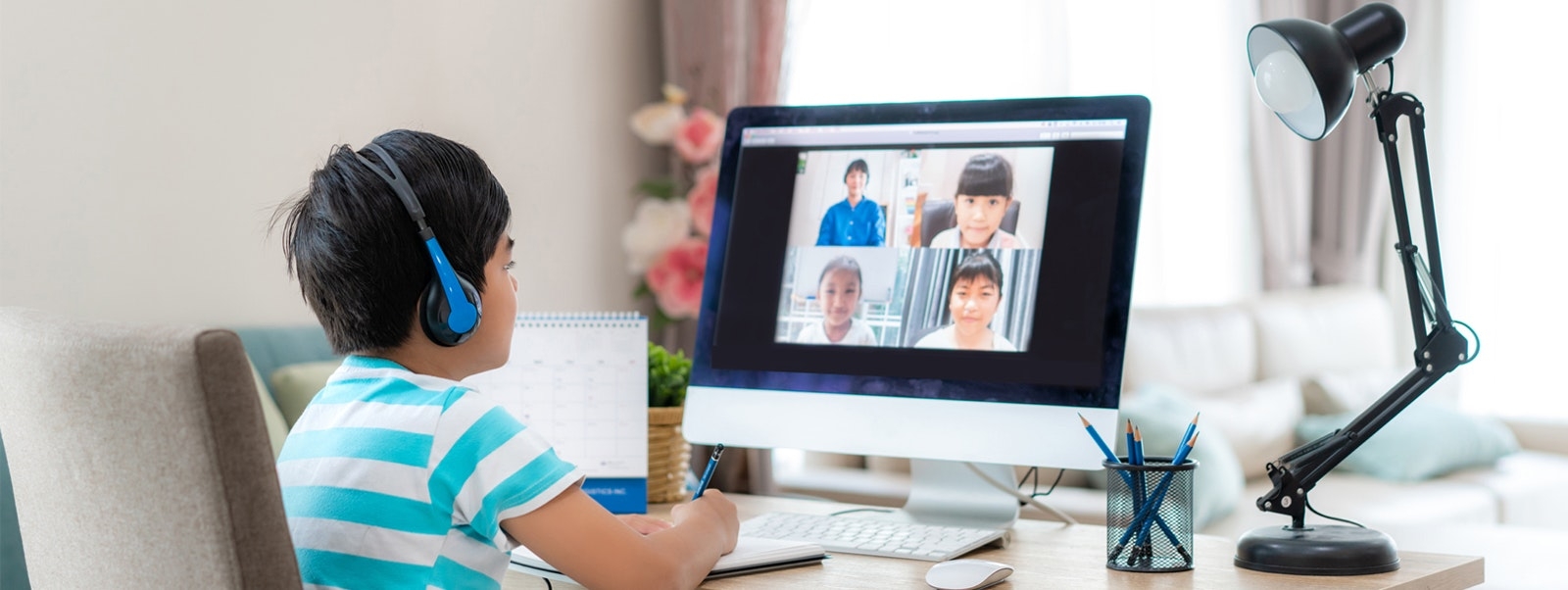This article was first published on April 21, 2020
More than 200 million Chinese students have been following primary and secondary school classes from home ever since the outbreak of the disease known as COVID-19 in China in January. Now, almost 53 million students in the United States and tens of millions more in Europe are following in their footsteps.
China’s shift to online learning was hurried and bumpy. In just three weeks, the Chinese government converted primary and secondary school textbooks and recorded instruction videos for key subjects such as math, Chinese, and English into new formats that could be accessed by Wi-Fi or television.
About 71 percent of teachers say their biggest challenge is gauging how effective their teaching has been, according to a recent survey of about 3,500 teachers conducted by Tencent and Xinhuanet. But this is not for want of effort. Almost 40 percent of China’s teachers spent at least six hours a day preparing for their next day’s lessons. Some sent 800 to 1,000 messages every day to the parents of typically 45 students in their classrooms.
One impact of the shift: A third of China’s parents who used to be against online learning are now open to new possibilities, according to Oliver Wyman’s survey of 30 large and mid-sized national and regional online educational training providers.
Many parents in the United States and Europe could easily end up feeling the same, and the experience with home schooling and online courses could trigger longer-term demand for online learning. In addition, schools might decide to incorporate online tools into their programs in areas where this works, in particular as drills and exercises.
So what can educators and investors in the United States and Europe learn from online schooling in China? We share some of the biggest lessons below.
Lessons For Educators
Redesign your class. Chinese educators found that simply following the same school schedule online is impractical, especially for younger pupils. First, it doesn’t hold students’ attention. Second, parents are forced to monitor their children for hours.
So teachers redesigned their classes. Many shortened 40-minute pre-recorded video or live-streamed lessons to 20 minutes, which included class activities such as lectures, drills, quizzes and student presentations every five to 10 minutes.
Some schools shortened their days from six classes to four and asked parents to lead the other two, such as physical education or housework. Others took a lesson from cram schools and jammed two days’ of curriculum into one day, to give families a one-day break and make it easier for parents to continue working. None of these designs was perfect. But they all made it easier for students to continue learning and for parents to juggle work and supervision of study2
Teach with parents in mind. Students – and parents – following livestreamed or recorded classes can become distracted. So it’s important to make expectations clear and stick to a schedule. All reference books and exercises need to be ready when the class starts. Parents should create an environment in which students can concentrate. And deadlines for homework must be clear.
Grading can be harder for remote teachers, especially for handwritten – or hand-drawn – assignments. And it is more important than ever to keep parents up to date with students’ progress. Automated tools can help. In China, teachers relied heavily on tools such as artificial intelligence-driven learning apps and grading devices, which automatically generate reports, calculate grades, and then send the results immediately to parents.
- Expect a boom in extracurricular education. As it became clearer the pandemic would last for a while, Chinese students of all levels enrolled in extracurricular online education courses to gain an edge. Primary and secondary school students signed up for online tutoring in English and math. High-school students signed up for online preparatory classes for university admissions tests, which have now been postponed by one month for most students. And enrollments in vocational training courses soared.
To meet this heightened demand, online educators revamped their content and devised new ways to operate and demonstrate the benefits of their classes. They set up student profiles, frequently measured their progress, and provided more opportunities for students to demonstrate how much they were learning by sharing books that they had read or facts that they had mastered in order to pass tests after attending class outside of school for three months.
Education Industry Investors
Emergency homeschooling could accelerate the long-term adoption of new educational services, leading to opportunities to invest in the companies that provide these.
One-stop online education solution providers. China is seeing the birth of an industry of one-stop online education service providers. They support education-related government agencies, schools, and extracurricular institutions with smoothly moving instruction, lesson planning, assessments, and administrative tasks online. Before the coronavirus crisis, online smart-education platforms were only popular in some developed regions and didn’t cover all the modules required. But now that they see more potential, many have helped the government to rapidly move standard textbooks and recorded classes online, along with tools to monitor student behavior and homework submissions.
After the Chinese government’s Herculean effort to provide homeschooling for all students during the crisis, a number of these online education services have gone further. They can provide any platform or support function to any school, teacher, or student from kindergarten through university. Ten times as many schools, teachers, and students now rely on these platforms than in 2019.
Hybrid extracurricular education provider. Before this year, it was expected that as many as 10 percent of China’s students would use extracurricular online education services by 2021. But now, it looks as though extracurricular online education services will become this popular much sooner and will be used by a much higher percentage of students.
Leading extracurricular education service providers that were already offering both offline and online tutoring and training will benefit from this trend. But traditional offline players without online capabilities will find it difficult to crack the online extracurricular education market, which already has the attention of China’s tech giants. To compete, they will have to make organizational changes, train teachers, upgrade their IT infrastructure, and establish new operational processes.
A similar pattern could emerge in the United States and Europe. As demand for extracurricular educational services grows, existing players with an online presence could grow rapidly, as big tech firms expand their reach.
An Emergency Solution Becomes The New Normal?
When Chinese students return to their schools April and May, the nation will discover if the world’s biggest experiment in online schooling has managed to keep students on track. After two months of homeschooling, an overwhelming majority of parents – 70 percent – say they can’t wait for schools to return to normal. And it is expected that 90 percent of primary and secondary school teachers who have been resorting to online teaching modules will once again teach classes offline.
But the experience of online schooling will have a lasting impact. China’s unprecedented experience will provide wider lessons about how best to structure remote learning. It has also awakened an interest in online learning in teachers, parents, and students, as well as in the country’s tech giants – Baidu, Alibaba, and Tencent.
A similar phenomenon could occur in the United States and Europe. In areas where remote schooling has proved effective, online solutions could easily be attractive in the longer term – to schools looking to supplement their staff and teaching materials; to parents who want to give their children an extra boost in some aspect of their education; and, possibly, to some children who enjoy learning outside the classroom.





